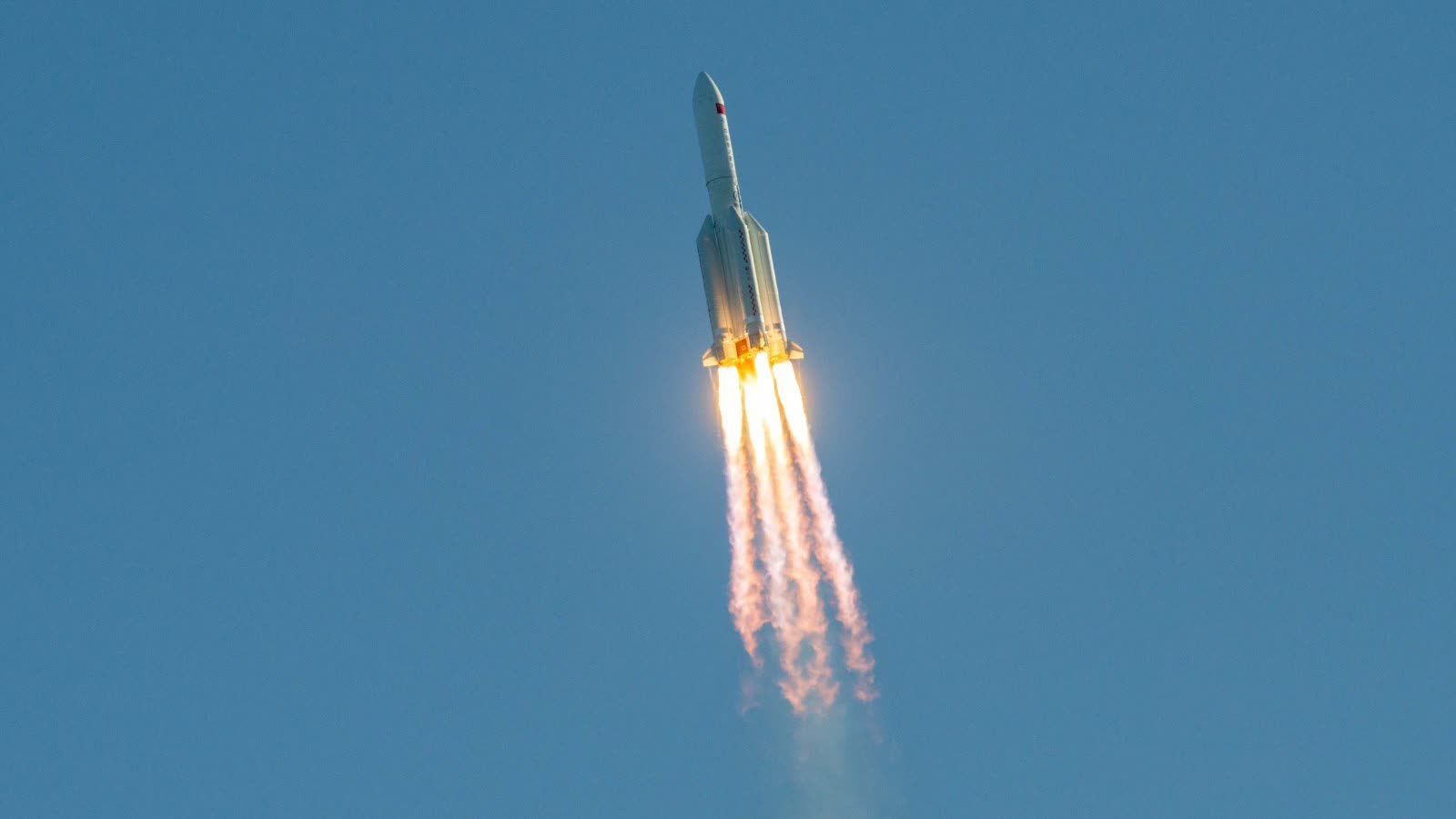What just happened? An out-of-control Chinese rocket has come crashing down to earth, marking the third time such an incident has occurred. The Long March 5B reentered the Earth's atmosphere on Saturday over the Indian Ocean before crashing somewhere near the Malaysian state of Sarawak on the island of Borneo. Fragments of the rocket moving through the night sky were caught on video by witnesses who thought they were looking at a shooting star.
The Chinese Long March 5B rocket launched on July 24, taking the second module (Wentian) to the Tiangong space station. The module contained equipment that allows the astronauts to perform scientific experiments, as well as three extra spaces to sleep and another airlock for spacewalks.
Reentry looks to have been observed from Kuching in Sarawak, Malaysia. Debris would land downrange in northern Borneo, possbily Brunei. [corrected] https://t.co/sX6m1XMYoO
--- Jonathan McDowell (@planet4589) July 30, 2022
As planned, the Long March 5B core booster detached from the rocket when it reached space. Unlike most modern rockets, the part doesn't reignite its engine to make a controlled re-entry, leaving many concerned about where the 100-foot-long, 22-ton object would land.
US Space Command tweeted that the Long March 5B rocket re-entered the atmosphere at 12:45 PM ET on Saturday. China said it re-entered just off the coast of Palawan Island, part of the Philippines, and that most of the debris burned up over the Sulu Sea between the Philippines and Malaysia.
People in several parts of Malaysia saw the rocket fragments and captured video of them falling to Earth. Jonathan McDowell, an astrophysicist at the Harvard-Smithsonian Center for Astrophysics, said the debris would land near Sibu, Bintulu, or Brunei, cities located along the northern coast of Borneo.
The Star reports that two families in Batu Niah, Sarawak, were told to evacuate their homes due to radioactivity dangers after an unidentified black object thought to be part of the rocket was reported on Sunday.
NASA Administrator Bill Nelson slammed China for not revealing more about what could have been a potentially lethal incident. "The People's Republic of China did not share specific trajectory information as their Long March 5B rocket fell back to Earth," he tweeted. "All spacefaring nations should follow established best practices, and do their part to share this type of information in advance to allow reliable predictions of potential debris impact risk, especially for heavy-lift vehicles, like the Long March 5B, which carry a significant risk of loss of life and property."
This is the third time a Long March 5B core stage has made an uncontrolled reentry. The same thing happened in 2020, ten days after launch, when debris landed on the Ivory Coast. There was also the second flight last year, parts of which landed in the Indian Ocean.
The third and final Tiangong module will be delivered by the Long March 5B rocket in October. While some believe China will scale back or stop uncontrolled reentries, the rocket will also be used to send a telescope to space in 2023, so expect at least two more of these incidents in the future.
